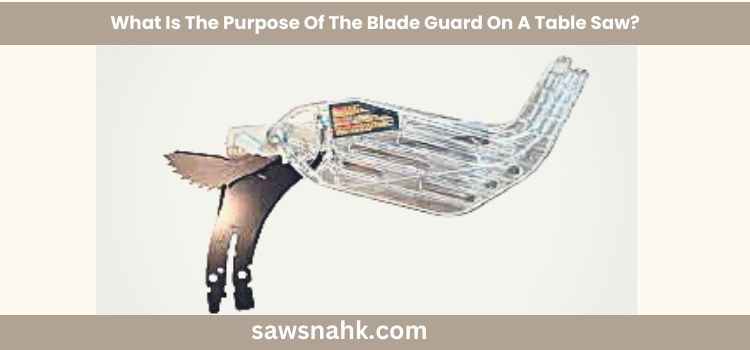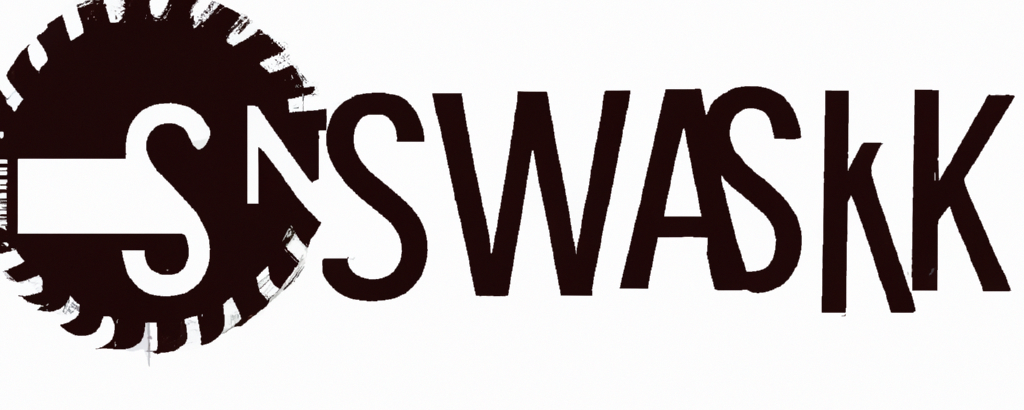What Is The Purpose Of The Blade Guard On A Table Saw?

Table saw blade guards are a safety device designed to protect the operator from accidental contact with the saw blade. They are required on all table saws sold in the United States. However, some woodworkers remove the blade guard, arguing that it gets in the way of making accurate cuts or that it is unnecessary for experienced woodworkers.
Is the table saw blade guard a necessary safety feature or a nuisance?
This blog post will explore the pros and cons of using a blade guard, as well as the available alternatives. We will also discuss how to use a blade guard safely and how to maintain it properly.
Here are some of the key questions that we will answer in this post:
- What is the purpose of the table saw blade guard?
- What are the benefits of using a blade guard?
- What are the types of blade guards available?
- How do I use a blade guard safely?
- When should I remove the blade guard?
- What are the alternatives to using a blade guard?
We encourage you to read the full post to learn more about this important safety topic.
What Is the Purpose of the Blade Guard on a Table Saw?
A table saw blade guard is a safety device that is designed to protect the operator from accidental contact with the saw blade. It is a clear plastic shield that covers the blade and prevents anything from falling onto it, such as fingers, hands, or tools.
The blade guard has two main purposes:
To prevent kickbacks.
Kickback is a dangerous phenomenon that can occur when using a table saw. It is when the wood is suddenly thrown back at the operator, often at high speed.
Kickback can be caused by a variety of factors, including using the wrong blade, feeding the wood too quickly, and not using the rip fence properly.
To prevent accidental contact with the blade.
Even if the wood does not kick back, there is still a risk of accidental contact with the blade. This can happen if the operator’s hands slip or if they are not paying attention.
3 Benefits of Using a Blade Guard:
1. Improved safety.
The blade guard is one of the most important safety features of a table saw. It can help to prevent serious injuries, such as amputations and lacerations.
2. Increased confidence.
Using a blade guard can give the operator increased confidence when using the table saw. Knowing that they are protected from accidental contact with the blade can help them to focus on the task at hand.
3. Reduced downtime.
Injuries can lead to downtime, which can cost businesses money. Using a blade guard can help to reduce downtime by preventing injuries.
2 Types of blade guards:
There are two main types of blade guards:
1. Fixed blade guards:
Fixed blade guards are permanently attached to the table saw. They are the most common type of blade guard and are typically found on lower-end table saws.
2. Retractable blade guards:
Retractable blade guards can be raised and lowered to allow for different types of cuts. They are typically found on higher-end table saws.
When to remove the blade guard:
There are a few times when it may be necessary to remove the blade guard:
When making dadoes and rabbets.
Dadoes and rabbets are cuts that are made across the grain of the wood. The blade guard cannot be used when making these cuts.
When using a Dado blade set.
A dado blade set is a special type of blade that is used to cut dadoes and rabbits. The blade guard cannot be used with a Dado blade set.
When using a table saw sled.
A table saw sled is a jig that is used to make precise cuts. The blade guard cannot be used when using a table saw sled.
How to Use a Table Saw Blade Guard?
To properly use a blade guard, make sure that it is properly aligned with the saw blade. Then, feed the wood through the saw slowly and evenly, keeping your hands away from the blade.
Step-by-step instructions for installing and using a blade guard:
- Make sure that the blade guard is compatible with your table saw.
- Follow the manufacturer’s instructions to install the blade guard.
- Adjust the blade guard so that it is properly aligned with the saw blade.
- Put on safety glasses and hearing protection.
- Turn on the table saw.
- Feed the wood through the saw slowly and evenly, keeping your hands away from the blade.
- Once the cut is complete, turn off the table saw.
Tips for using a blade guard safely:
- Always use the blade guard. The blade guard is one of the most important safety features of a table saw. Use it whenever possible.
- Make sure the blade guard is aligned with the saw blade. A misaligned blade guard can be dangerous and can lead to kickback.
- Feed the wood through the saw slowly and evenly. Feeding the wood too quickly can increase the risk of kickback.
- Keep your hands away from the blade. Even when using a blade guard, it is important to keep your hands away from the blade.
Tips for maintaining a blade guard:
- Clean the blade guard regularly with a damp cloth.
- Inspect the blade guard for cracks or breaks.
- Replace the blade guard if it is damaged.
Alternatives to Using a Table Saw Blade Guard
Explanation of alternatives to using a blade guard:
There are a few alternatives to using a table saw blade guard. However, it is important to note that these alternatives do not provide the same level of protection as a blade guard. Therefore, it is important to use extreme caution when using any of these alternatives.
Examples of alternatives to using a blade guard:
Using a riving knife instead of a blade guard:
A riving knife is a thin metal plate that is inserted into the saw blade slot. It helps to prevent kickback by keeping the kerf open.
However, a riving knife does not provide the same level of protection as a blade guard against accidental contact with the blade.
Using a push stick or push block to guide the wood through the saw:
A push stick or push block is a tool that is used to feed the wood through the saw while keeping your hands away from the blade.
However, using a push stick or push block does not eliminate the risk of kickback or accidental contact with the blade.
Conclusion:
Table saw blade guards are an essential safety feature designed to protect the operator from accidental contact with the saw blade. The blade guard has two main purposes: to prevent kickbacks and to prevent accidental contact with the blade. Using a blade guard can improve safety, increase confidence, and reduce downtime.
There are two main types of blade guards: fixed and retractable. It is important to use a blade guard whenever possible and to maintain it properly. While some woodworkers remove the blade guard, it is not recommended as it can lead to serious injuries.
